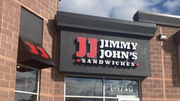Article
The Popeye principle (or, "I am what I am.")
While it's understandable that brands evolve, concept evolution has to make sense.

August 17, 2010 by Lori Walderich — CMO, Top That! Pizza
After a long day of foul weather and flight delays, the gate agent for a major airline is rebooking passengers in a seemingly endless line.
A commotion erupts as a businessman pushes his way to the counter and jabs at his Rolex Oyster Perpetual, “Here, you. Do you see what time it is? I was supposed to be on a flight 15 minutes ago!”
Continuing with her task, the agent replies, “Sir, we’ll get you on the next available flight, but you’ll have to wait your turn.”
The man slams down his briefcase, glares at the agent and shouts, “Young woman, do you know who I am?!” The agent calmly reaches for the intercom. “Attention, passengers. If you know the gentleman at the counter, come forward. He’s forgotten who he is.”
This story came to mind as I read a recent report that Pizzeria Uno Corporation (aka Uno Chicago Grill) had emerged from Chapter 11 bankruptcy. “Now there,” I thought, “goes a brand that completely forgot who it was.”
So completely, in fact, that the company’s own Web site asks incredulously, “Uno Chicago Grill serves steak?” Why, yes. And bbq short rib sliders, and lobster mac-and-cheese, and chicken tikka masala, and fish and chips, and a chopped Hong Kong sesame-lime chicken entrée salad. Oh, and Chicago deep-dish pizza. That category is listed sixth on the Uno Web site, after thin-crust pizza. It’s mystifying.
I understand that brands evolve. In fact, I believe they must evolve … or slowly go the way of Burma Shave. Brands that dig in and refuse to move forward have confused a “niche” with a shallow grave.
Still brand evolution has to make sense. There are perfectly good reasons why pigs have not evolved with wings. They do not need them any more than Uno needs chicken tikka masala.
Though I don’t like to jump to conclusions, I’d wager the price of an Uno deep-dish pizza that brand dilution has plenty to do with the chain’s money woes. We can say this with confidence because we’ve seen it in our own clients.
It’s a strange thing that when a concept starts to struggle, corporate HQ almost always assumes that it’s because the menu is too narrow. Rather than ask why the brand is failing to connect with customers, management decides to broaden the brand to appeal to new customers.
So it is that you get pizza chains adding barbecue entrées and barbecue chains serving Mexican food. Eventually, loyal fans become so annoyed with the watering down of a once-unique concept they they just stop going. And the downward spiral deepens.
So, for the sake of argument, let’s say that pigs did evolve wings. Would they not still be pigs (that you would just really, really want to avoid standing beneath)?
Had Ray Kroc announced in 1970-something that McDonald’s chain would one day serve frozen coffee drinks, someone would surely have muttered, “Right. When pigs fly.”
But what McDonald’s has done so well is a natural evolution over years, not months. And each step of the evolution capitalized on something — or many things — that the chain already did well. So a chain that did tasty milkshakes added ice cream treats; one that had pretty decent coffee added fancy coffee drinks, then fancier smoothies.
Each step capitalized on McDonald’s brand strengths of consistency, speed of service, competitive price and small indulgences. And none of the product introductions minimized in any way the burger combos and happy meals and other menu staples that constitute the core of the brand.
McDonald’s is still McDonald’s.
The common denominator in successful brand expansion is a strong internal sense of identity and an enduring commitment to maintaining the integrity of the brand core.
And the common result is a brand with no need to shout indignantly, “Do you know who I am?!”












